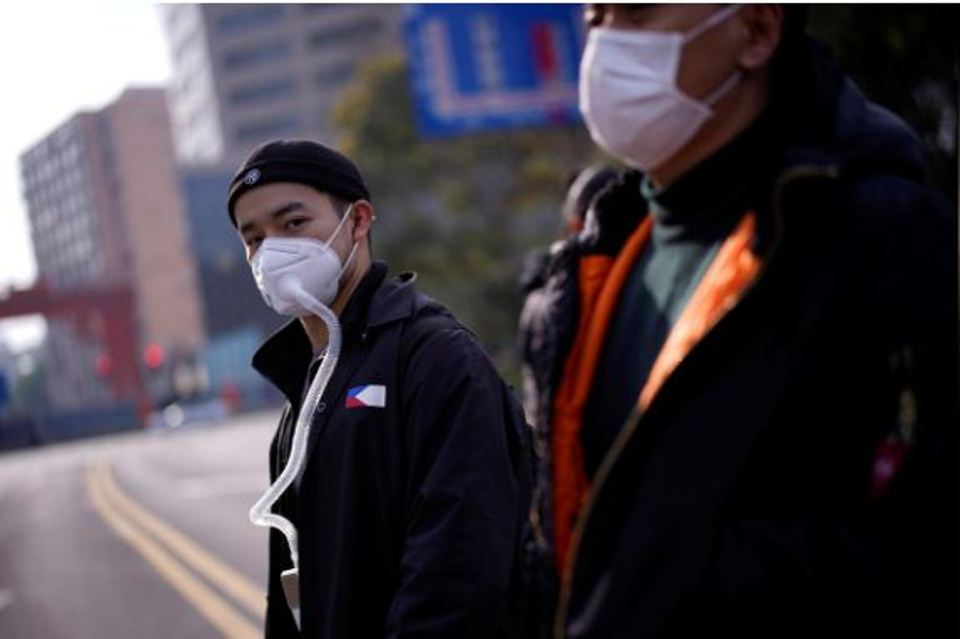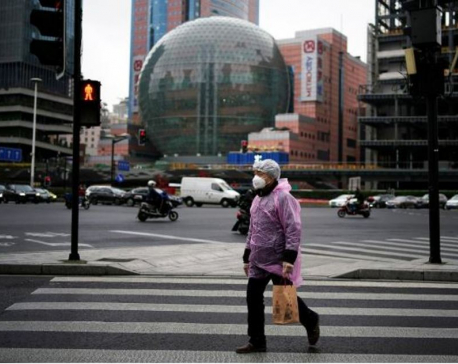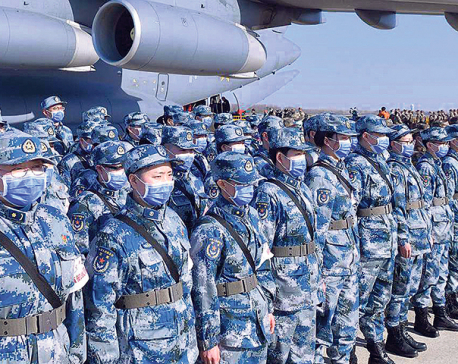
OR
As new cases of coronavirus subside in China, Wuhan told to go back to work
Published On: March 11, 2020 01:47 PM NPT By: Reuters

BEIJING/SHANGHAI, March 11: Some key industries in Wuhan, the Chinese city at the epicenter of the coronavirus epidemic, were told they can resume work on Wednesday, a day after President Xi Jinping visited the city for the first time since the outbreak began.
The city of 11 million has been in lockdown since late January, but Xi’s visit signaled the tide was turning in the government’s favor as it fights to contain a virus that as of Tuesday had infected 80,778 people in China and killed 3,158.
As some people were told they could gradually return to work at the epicenter of the epidemic, authorities elsewhere in the country were lowering emergency response levels to the epidemic and relaxing travel restrictions.
Drawing confidence from Xi’s visit and falling new infections, the Hubei provincial government posted a notice on its website saying public transport workers in Wuhan, and workers engaged in making medical supplies and producing daily necessities would be allowed to return to work.
Other industries that impact national or global supply chains can also return to work with permission from relevant authorities, it said.
Wuhan is known as one of China’s ‘Detroits’, accounting for nearly 10% of vehicles made in the country and home to hundreds of parts suppliers. Across China, manufacturing is slowly returning to normal.
Though the economy is still operating at about 25% below its usual levels, activity should be fully restored by the end of April, Francoise Huang, senior economist at Euler Hermes, predicted in a note to clients.
On Wednesday, Japanese automaker Nissan said it planned to partially resume production at two Chinese plants, one of them in Hubei. Its competitor Honda said that some employees had returned to work at its plant in Wuhan, and that it would gradually restart production from Wednesday.
While relaxing some restrictions, the Hubei government said curbs on transport in Wuhan would remain in place, and schools in the province would remain closed until further notice.
The city of Qianjiang in Hubei also bucked a wider loosening trend, with authorities saying they would retain strict transport bans, revoking a previous policy of removing traffic checkpoints and resuming public transport.
Latest figures from the National Health Commission on the spread of the virus showed 24 new cases nationwide, and 22 more deaths as of Tuesday. All the latest deaths occurred in Wuhan.
But, new infections in Hubei continued to stabilize, with new cases declining for the sixth day. All 13 new cases in Hubei were recorded in Wuhan.
IMPORTED CASES
The most encouraging trend to be taken from the latest infection figures was lower rate of transmission within communities in China, as 10 of Tuesday’s 24 new cases involved people traveling from abroad.
While only 79 of the cases in China have come from abroad, the rising number of such incidences has prompted authorities to shift their focus on containing the risk of imported cases.
The capital of Beijing saw six new cases on Tuesday involving individuals who traveled from Italy and the United States, while Shanghai had two imported infections, Shandong province one and Gansu province one.
Elsewhere, however, Hunan province and the municipality of Chongqing lowered their emergency response level, while cities around Shandong province resumed inter-city and rural passenger transportation routes, the official Xinhua news agency reported.
Shandong, however, stopped short of resuming routes to Beijing and Hubei province.
So far, about three-quarters of China’s municipalities, regions and provinces have lowered their emergency response level from the highest tier.
You May Like This

China's President Xi visits Wuhan as number of new coronavirus cases tumbles
BEIJING, March 10: Chinese President Xi Jinping visited Wuhan, the epicentre of the coronavirus outbreak, on Tuesday, marking the first time... Read More...

China’s COVID-19 Moment
HONG KONG – Last October, the 2019 Global Health Security Report included a stark warning: “National health security is fundamentally... Read More...

Step up alert
There have been a lot of misperceptions about coronavirus, now called COVID 19: That every infected succumbs to death, that... Read More...



Just In
- World Malaria Day: Foreign returnees more susceptible to the vector-borne disease
- MoEST seeks EC’s help in identifying teachers linked to political parties
- 70 community and national forests affected by fire in Parbat till Wednesday
- NEPSE loses 3.24 points, while daily turnover inclines to Rs 2.36 billion
- Pak Embassy awards scholarships to 180 Nepali students
- President Paudel approves mobilization of army personnel for by-elections security
- Bhajang and Ilam by-elections: 69 polling stations classified as ‘highly sensitive’
- Karnali CM Kandel secures vote of confidence















Leave A Comment